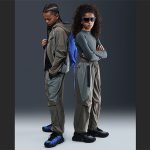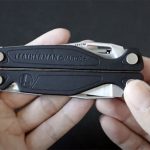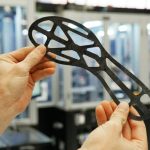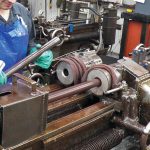Contrary to conversations circulating around the market, the Vibram FiveFingers “barefoot” business remains in growth mode, according to company management. Vibram FiveFingers sales reportedly doubled in 2011 and are performing ahead of internal projections so far in the current year, according to Michael Martin, VP of sales for Vibram FiveFingers.
But due to a few factors, particularly the flood of alternative natural, minimalist and barefoot footwear options hitting the marketplace over the last year, Vibram's dizzying growth pace since it was first launched in 2006 has certainly slowed. Also, partly because Vibram was able to finally adequately stock inventory levels at retail this past year, sell-through rates have been running down for retailers as they sell against deeper inventories. Adding in the impact of a challenging retail economy, Vibram is expecting FiveFingers sales to be up modestly in 2012. (Sales doubled in 2011 to approximately $100 million, Tony Post, CEO of Vibram USA, previously told INC. magazine.)
Yet Vibram remains optimistic about the prospects for FiveFingers and the overall barefoot/minimalist movement.
In an interview with Sports Executive Weekly, Martin said an eventual slowdown from the blistering revenue growth rate at FiveFingers was expected and shouldn't be a sign of any slowdown in the overall “rapid rate” of growth seen in the barefoot/minimalist footwear category. Indeed, he believes the number of other brands entering the barefoot/minimalist category including several traditional running brands that at first ridiculed the movement further legitimizes the opportunity for the category.
“It's healthy,” said Martin of both the overall category trend and FiveFingers' business. “2011 was really a break-out year for the category. A lot of brands launched products in the spring and more brands launched product in summer and fall. And even with all of that coming into the space, we still doubled our business.”
Based on retail point-of-sale data compiled by SportScanInfo (SSI), retail sales of VFF approached $160 million in fiscal 2011 through January 26, 2012, a 54 percent increase. The SSI data reveals that sales growth was flat over the six-week Holiday selling period through January 1 and up just 18 percent in the four-week fiscal January sales period. Sales actually dipped 10 percent in fiscal February, according to the SSI data.
Martin said the “deep triple-digit growth” FiveFingers had been generating annually in its first five years since the blockbuster launch wasn't expected to be sustainable. First, growth is capped because Vibram wants to reserve the line in service-oriented, specialty outdoor, shoe and running channels and many of those accounts had been reached. Excluding a “robust business” being done with REI, FiveFingers can't be found in any big boxes and is largely focused on specialty running, specialty outdoor and premium independent shoe accounts.
“Unlike a lot of vendors out there, we're not widely distributed,” said Martin. “We've chosen to build the business in full-service brick & mortar specialty stores.”
Second, as with many other hit items, growth is slowing as other competitors come up with their own approach to pursue the revenue opportunity.
“A couple years ago you couldn't name three or four companies that were in the minimalist category. Now you can probably list 15 to 20 that have products out there,” said Martin. “So the landscape is different.”
Sales in 2011 were certainly impacted in part by the launch last spring of the Merrell barefoot collection and subsequent launches of the New Balance Minimus and Fila Skele-toes product. Merrell launched its Barefoot program with over 400,000 pairs sold in on an initial pre-season bookings program and Fila reportedly shipped a million pairs of Skele-toes in 2011 (with 2 million planned for 2012).
Third, inventory in the last year finally caught up to demand, helping sales but complicating sell-through comparisons. From 2006 through 2010, FiveFingers product was continually sold out and retailers screeched for product as its appeal was reaching a fever pitch. With a further commitment, Vibram ramped up production to adequately fill inventory orders for FiveFingers in the last year for the first time but that impacted sell-through rates.
“We caught up with inventory and retailers got to higher levels,” explains Martin.
“But a retailer's unit sales could be up and their inventory is also up more dramatically from the year before. So the way the math works, their sellthrough percentage could be lower. And candidly, because there are more storefronts with the line, some retailers may have experienced a flattening in unit sales.” Also, while Vibram's internal inventories are in line, higher inventories across retail may restrain growth for FiveFingers in 2012.
According to the SSI data, the average selling price of the VFF product has shrunk as other lower-priced product has hit the market and inventories have build up at retail. While new product from Vibram is still selling at normal pricing, overall average selling prices (ASPs) have slipped as retailers liquidate goods from 2011 in advance of the 2012 product arrival.
VFF average selling prices were $76.12 in fiscal 2011 versus $84.97 in 2010, according to the SSI data. ASPs had fallen to $62.71 in January alone.
In the U.S., recent sell-through rates at the close to 450 stores VFF tracks weekly in terms of sell-through have been improving as warmer weather and spring arrives. FiveFingers exceeded plan in both January and February and is on its way to making plan in March despite the start of the year being soft in general for retail amid economic uncertainties and the impact of a mild winter.
“Retail in January was a little bit slower but it has picked up,” said Martin, “There probably was a slowdown in the colder months and that's typical. We noticed that trend start in Fall 2010 and it probably happened a little harder in 2011. But we hope to counter that slowdown in the last quarter of the year through these new products that we're launching.”
Moreover, Martin said Vibram welcomes other brands into the space, and even partnered last year with New Balance and Merrell on their successful barefoot product launches. While lending broader support to encourage consumers to try barefoot shoes, other brands bring more alternatives to the marketplace and also potentially extend the message around foot health.
“We've never said FiveFingers is the 'be all' or 'end all,'” said Martin. “Clearly we're making outsoles for lots of other categories of footwear out there and you need protection and you need cushioning in some cases and that's great. Our biggest thing is really advocating more foot health and saying, ‘You've got to be aware of your feet and you've got to exercise your feet like you do the rest of your body.'”
Overall, Martin said demand for FiveFingers remains healthy with a loyal fan base, including over 180,000 Facebook fans spread across the country.
While no longer driving triple-digit growth, “we're still getting solid business done,” Martin said. Growth for the brand in its early years was driven in Southeast states such as Tennessee, Alabama and the Carolinas but has since penetrated every region in the country. Said Martin, “It's not a purely weather-driven category. We're in every state and minimalism is in every state. I haven't seen any places where it isn't taking off.”
FiveFingers' Canada business is “rapidly expanding” and VFF has a growing business in the Caribbean and Central America. Outside of North America, the brand is just gaining a foothold and recording solid growth. Internationally, Vibram has 39 FiveFingers distributors across 60 countries.
Vibram continues to make adjustments to FiveFingers, primarily through different bottoms, to provide some protection to help people do different activities albeit “without sacrificing the movement of the toes, which is always very important and the hallmark of our product.” That includes even adding a little EVA to some models since rubber is a poor insulator against heat and cold.
But VFF also recognizes that it would betray its fans if FiveFingers strayed too far from its radical look.
Finally, the fall/winter period has typically been a slow-season for the product. To reduce the seasonality, Vibram for Fall 2012 has introduced water resistant and insulated shoes to handle colder weather and wet climates. But the lack of such options appeared to impact FiveFingers revenues in recent months more than in past years.
Martin also admits that for some consumers, the glove-like feel and protruding-toes look of FiveFingers is a turnoff. Although the “curiosity factor” clearly holds appeal for many prospective FiveFingers buyers, the market needs other options.
“Some people don't like the look of [FiveFingers]. Some people don't like the feel of it. They don't like something between their toes. Some people just don't like the look of their own feet and anything that has the look of their own feet,” said Martin. “So it's nice to have New Balance and Merrell versions out there to give that consumer an alternative if that's how they feel at an aesthetic level.”
“We're definitely on the extreme side and we do have to strike a balance,” said Martin. “If we go too far, suddenly we're just another shoe and we lose that value and that connection with the consumer.”
With the number of brands now in the space, one newer challenge is the message is becoming “a little murky” to consumers, especially with some brands pursuing the opportunity with shoes that clearly don't qualify as barefoot or minimalist.
Martin said education and consistent messaging is particularly important since runners can get injured if they don't properly transition from more traditional to barefoot/minimalist models. Said Martin, “We have to be really careful as an industry – both at retail and as vendors that we don't create consumer confusion and lead them away from making a purchase altogether.”
But with the vendors coming into the category, more scientific evidence supporting it, and consumers becoming more health aware overall, he believes minimalism has moved “well past the point of being some sort of fad or short-term trend” and established itself as a sustainable category at retail.
“There are people who have found tangible benefits from running in minimalist footwear and from exercising in minimal footwear ranging from professional athletes down to the casual user,” said Martin. “I think it's here to stay and it's just going to become an ever-growing piece of the footwear wall at retail. People are going to want to see more models from more vendors to have more options to choose from and we hope they choose the original!”















